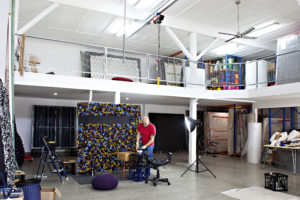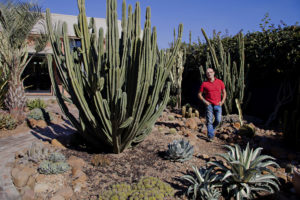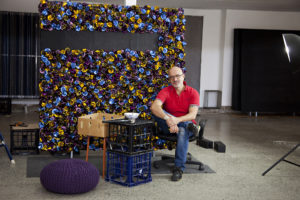
Danielle Minett Natural Lights Photography

Danielle Minett Natural Lights Photography

Danielle Minett Natural Lights Photography
Sydney, New York, Cessnock: International practice in regional Australia
It’s the middle of a Tuesday afternoon in July, and I’m walking the narrow streets of Soho, New York, the global epicentre of contemporary art. The cobblestones bake under tired feet and my eyes squint, attempting to make out the street numbers: 68… 70… 72. This is it. I press the buzzer and moments later I hear the door lock click. I step into the elevator and press ‘5’. The elevator jolts to a halt, and the doors slide open onto Dani Marti, waiting at the entrance to a large loft studio. His shaved head is tanned and he is barefoot, wearing shorts and a t-shirt. He beams with his usual charm and welcomes me into the studio.
I’m here to interview Dani. The Barcelona-born artist forged a career in contemporary art relatively late, giving up a lucrative position as a Trade Representativie for Catalonia (Spain) a Spanish trade commissioner. After having to deal with his HIV positive status for many years, it was only in 1997 when he consciously decided to start practicing as an artist , at the age of 34 . . . Now in his 50s, he’s one of Australia’s most successful contemporary artists, commercially and critically.
Dani has a residency here, at the Greene Street Studio, a classic New York loft artist’s studio. And it’s big – 134 square metres – with bright daylight diffused throughout the space through large skylight windows. In front of me, there’s a living room area with large couch and coffee table, next to an open window leading onto the typical New York fire escape. On the right is an office or workshop area and in the far corner is a small kitchen. In the centre of the cavernous space is the studio’s main work area. As an art theorist, I’m thrilled at what I’ve just found, and utter aloud: ‘Wow… now, this is an artist’s studio!’ This New York loft ticks all my romanticised boxes about what an artist’s studio should be.
But then Dani tells me that the studio is privately leased by the Australia Council for the Arts, and he actually lives only 50 kilometers from Newcastle in Australia, in Cessnock, a small country town at the edge of the vineyards of the Hunter Valley.
Two years after my first interview with him in New York, I’m back in Dani’s studio – but this time it’s on the other side of the world, in Cessnock.
Dani is often commissioned to create works for corporate and government clients in Sydney or Newcastle. He also enjoys considerable commercial and critical success, and a significant international profile. So, how did a successful Spanish contemporary artist end-up in a small country town in Australia? “Cessnock, how do you describe it?”, Dani ponders. “It’s a very very working class town, low income, it’s one of the very few country towns as close to Sydney… it’s got a sense of country life still.” Cessnock is not a town that will be known any time soon for its visual arts. The nearby town of Kurri Kurri is known for its folksy murals, but Cessnock closed its only public art gallery a couple of years ago. The local kids do burn-outs at the intersection nearby and dealers sell crystal meth from their cars in the laneways. However, in spite of this, Dani loves his Cessnock base because of the absence of ‘artworld’. He’s joined a local cycling group and says, “I like the people here. I’m hanging around with tradies and miners, and I much prefer that than all that pretentious people sometimes in Sydney.”
He’s just shipped-out three large works to South Australia, which have been included in the Adelaide Biennial and now he’s working on a body of works for an exhibition at Arc One Gallery, in Melbourne. There are a few different groups of works being created for the show, which is titled Run, Run ,Run . The short title perfectly describes the hyper-colour eye-candy works Dani is working on. Look at them too long and you might get buzzed on the artificial colourings and high sugar content. Two of the pieces he’s working on are coming together slowly on large aluminium frames, which are propped up on milk crates and leaning against a wall. Both works are a web of hundreds, maybe thousands, of beaded necklaces chaotically woven into a mesh, stretched across the frame. A local tradesman fabricates the frames and the mesh is actually made for farming oysters. The necklaces are sourced from a second-hand store on the New South Wales Central Coast, north of Sydney. Dani says, “I’ve been collecting them for the last two and a half years… they know me very well. They say ‘oh, it’s the necklace man’, come in, come in Dani, we love you!”. Dani starts by wearving the necklaces into the oyster mesh at the outer edges of the frame, sometimes forcing the necklaces into place with a screwdriver. Like many of Dani’s three-dimensional works, these are large scale, process-heavy and labour-intensive. Over many hours, he builds up the necklaces into a surface, like a thick and heavy painting, “a surface that is very overcharged, and sickening to some degree… something a bit frenetic about it”, Dani says. He is conscious of not prescribing the meaning of his works, but he says the piles of old necklaces remind him of the disembodied jewellery, shoes and spectacles at Nazi concentration camps. They have those resonances for me too.
Dani’s studio in Cessnock is larger than even the Greene Street Studio in New York. And it’s also his home. The complete property occupies one end of a suburban block, between an old general store and a former butcher. Dani half-joking calls it “The compound”, because it is hidden behind a high wall topped with thorny bougainvillea, like a natural barbwire fence. You would never suspect it from the street, but inside is an oasis of towering cacti, palm trees, a swimming pool and two artist’s studios. Dani works in the larger space, while his long-time partner, Phil Drummond, works in the old butcher’s shop building. Phil, like Dani, is also a successful contemporary artist, represented by a major commercial gallery in Sydney. He paints the most incredible delicate and dark still lives. In person, Phil is a complete contrast to the work he creates. He looks and talks a bit like an Australian bushranger from the nineteenth century, beard and all. He’s provocatively brash, and one of the funniest people I’ve met. At the back of the studio, in what used to be a car park between the corner store and the butcher’s shop, Phil is responsible for creating the impressive succulent garden and swimming pool. The garden in itself reveals thousands of hours of his creativity, and Phil’s obvious passion for horticulture is evident in his still life paintings, which are often of plants. The time invested in this incredible cactus garden shows that Cessnock is where they have both set-down their roots for the long run.
For Dani, real estate is the most important factor in moving to Cessnock. Many artists need a lot of space to create work, which is why the cliché of the old factory space often rings true with many artists. Chris McAuliffe, writing about the studio of another Australian artist, John Cattapan, says “Like any good work area, the factory is a simple model of the artist’s mind space; somewhere that can accommodate old and new work alike, somewhere that shuts out the world without entirely isolating the artist”. And Dani’s Cessnock studio is like a small factory. The ceiling is high, allowing him to rig-up and create some of his heaviest woven rope works, such as the enormous Armour works he created for the 2014 Adelaide Biennial — four large three-dimensional works made of black woven ropes that are suspended from the ceiling. Dani can create works of this large scale in the centre of the space. Regardless of the large space that Dani had in New York, the physical location directly determined the scale and types of work he produced there: “When I was in New York, I knew that the logistics to make sculpture for a three months residency meant shipping materials back and forth was too complicated.” As he forces a beaded red necklace into the surface, he elaborates: “To be there in New York for three months, the best thing to do is to experiment and do things to be able to move fast. If I was to concentrate on making [sculptural] work, I’d be doing the same thing I’m doing in Australia as I’m doing there. That wasn’t the point. The point was to let the set-up, the city affect the work you were doing at the time, so that’s why I decided to concentrate on video.”
Dani’s video works are a stark contrast to his aesthetically rich three-dimensional works. They often take on confronting themes on the darker side of sexuality and addiction. One of the works he worked on in the New York studio is Butterflyman, 2012, which plots the physical deterioration over two years of a New Yorker friend battling crystal meth addiction. Dani explains, “he’s lost half of his weight, he’s lost some of his teeth, so he’s on his way out. So I said to him, ‘I want to film you’, and one of the things he likes to do is ‘flagging’ – so something quite gay and beautiful, silk white flags, and he dances… he loves dancing.” Dani invited him to the studio and filmed him dancing with flags until he became exhausted, creating a contrast between the beauty of the flagging and the depletion of his body. The resulting video work captures the fatigued naked body and hollowed cheeks of the performer in excruciating slow motion. Like many of Dani’s video works, it is difficult to watch.